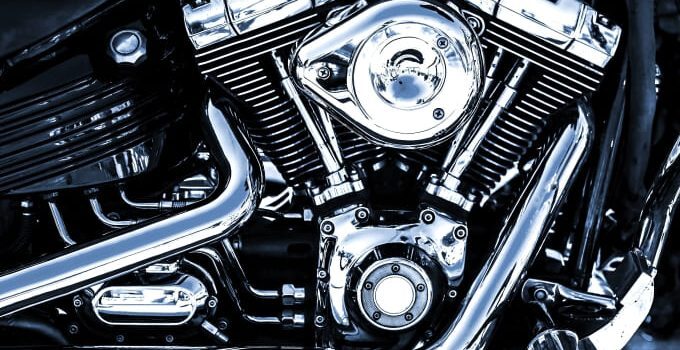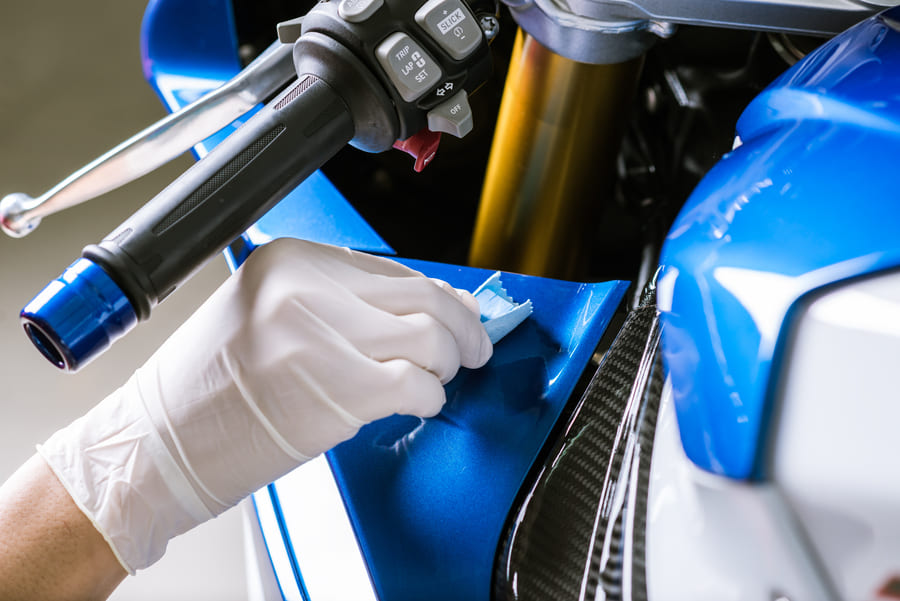
The motorcycle fork is the main component of a bike’s front suspension. The type that is most commonly used today is telescopic and connects the front wheel of the vehicle to its chassis. Conventional components consist of two long tubes held together by triple clamps, containing internal coil springs and a damping mechanism. Modern forks operate using a hydraulic fluid system, similar to shock absorbers, however, some older versions still rely on springs for absorbing impacts.
Forks play a critical role in steering and maintaining traction and stability. They are designed so that when the bike hits a bump or goes over a pothole, for example, the front wheel and suspension responds while the rest of the bike is isolated from this movement. The conventional telescopic system uses damper-rods to control the flow of the low viscosity fork oil, creating resistance and dampening compression and rebound forces. In simpler terms, it stops your motorcycle from bouncing or feeling bumpy.
To learn more about the front and rear suspension systems on motorcycles, check out the latest article on our blog: How do motorcycle suspension systems work?
Types of motorbike forks

- Conventional vs inverted
As mentioned above, the standard components consist of two legs with telescopic tubes at the top and the sleeves at the bottom. Inverted forks (a.k.a. upside-down forks) follow the same principles except the tubes go at the bottom and the sleeves go on top. The walls of the tubes are also thinner. The key advantage of inverted components is that they are lighter and therefore reduce the vehicle’s unsprung weight, which is basically the overall mass of the components below the suspension. These parts include the wheels, tyres, brakes, etc. The lower the mass, the quicker your suspension can respond to changes in the road.
- Damper-rod vs cartridge
These are the two main types used by motorcycle manufacturers today. Parts with a damper-rod system are the most basic, as the damping force is created simply by forcing the oil through a set of holes in the rod. However, the restricted oil only generates a resistance proportional to the square of velocity. For low speed impacts or movements, the damping can be too low, whereas at high speeds the resistance can be too high, making the forks less effective.
Cartridge forks offer a more effective alternative for linear damping. The legs contain a small cylinder or “cartridge”. This element is submerged in the fork oil. The damping force is created by a moving piston inside it and regulated by spring loaded shims which function like a valve. The valve on the piston restricts the flow of fluid during compression and allows it to flow through as the spring rebounds.
How to check for a bent motorcycle fork
Unfortunately, forks are more vulnerable to some impacts than others. While it may have no problem with surviving large potholes, if you collide into something head on, the part is more likely to bend and suffer damage. Thankfully, in most cases, repairs are possible. However, this will also depend on the type of frame and the extent of the damage. Straightening the fork shouldn’t cost the earth but if you would like to cut costs, you may be able to do this at home.
First off, you’ll need to identify signs of bending that may include other imperfections, such as flaking, rippling or cracking on the surfaces of the front suspension parts. You should also closely inspect the motorbike fork and frame for hairline cracks or dents. Make sure to check the underside of the tubes too.
How to check the fork:







Comment